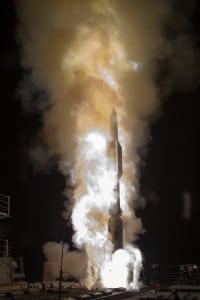
The head of the Missile Defense Agency (MDA) this week said several current missile defense systems likely have a capability to defend against hypersonic threats and plans to procure hundreds of Standard Missile (SM-6) interceptors will help allow salvo defense. MDA Director Vice Adm. Jon Hill testified before the Senate Armed Services’ subcommittee on strategic forces on Tuesday that there is some capability to intercept hypersonic missiles through several current programs, including Patriot, Standard Missile (SM-6), and the Terminal High…

 By
By 











